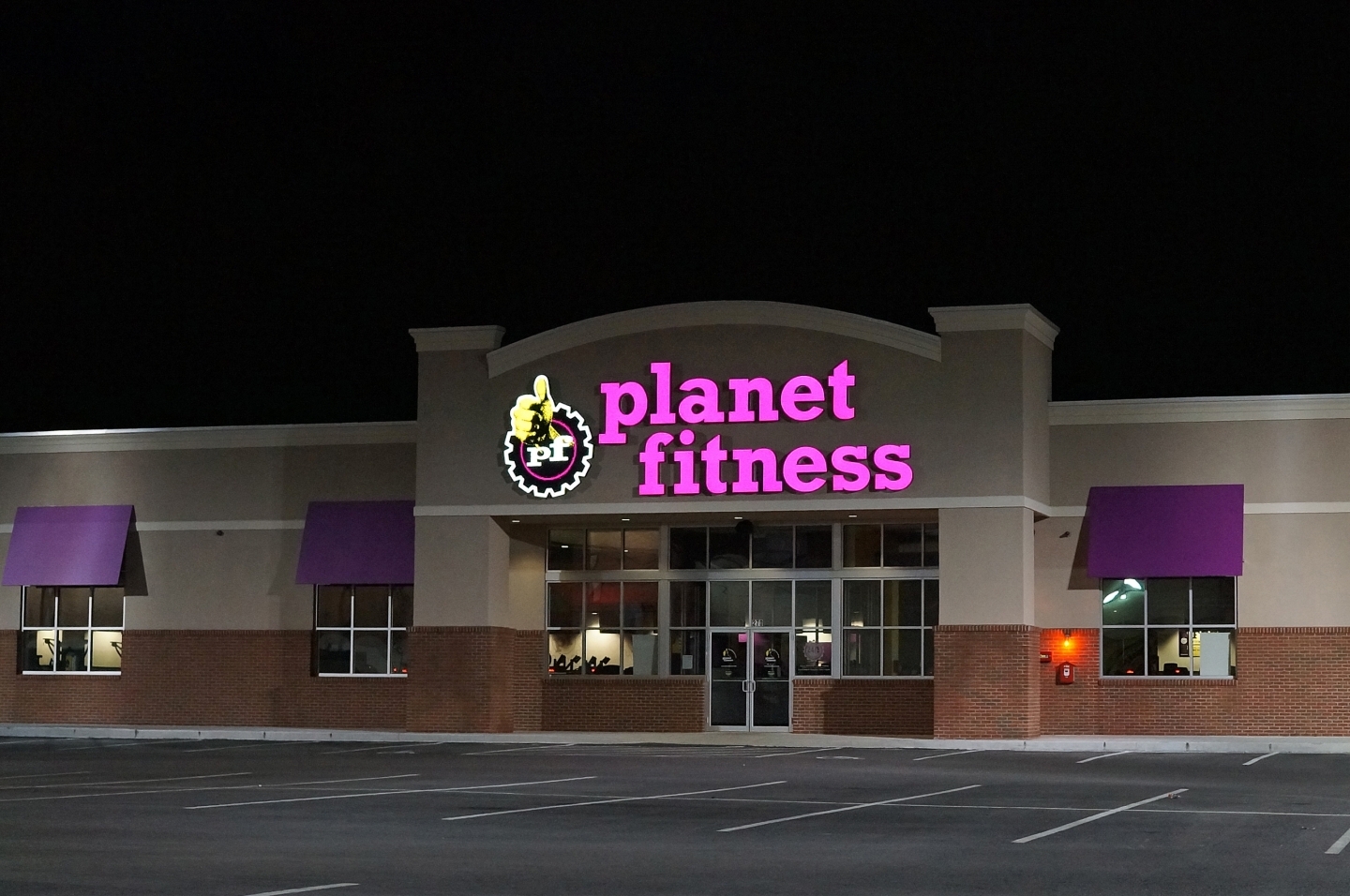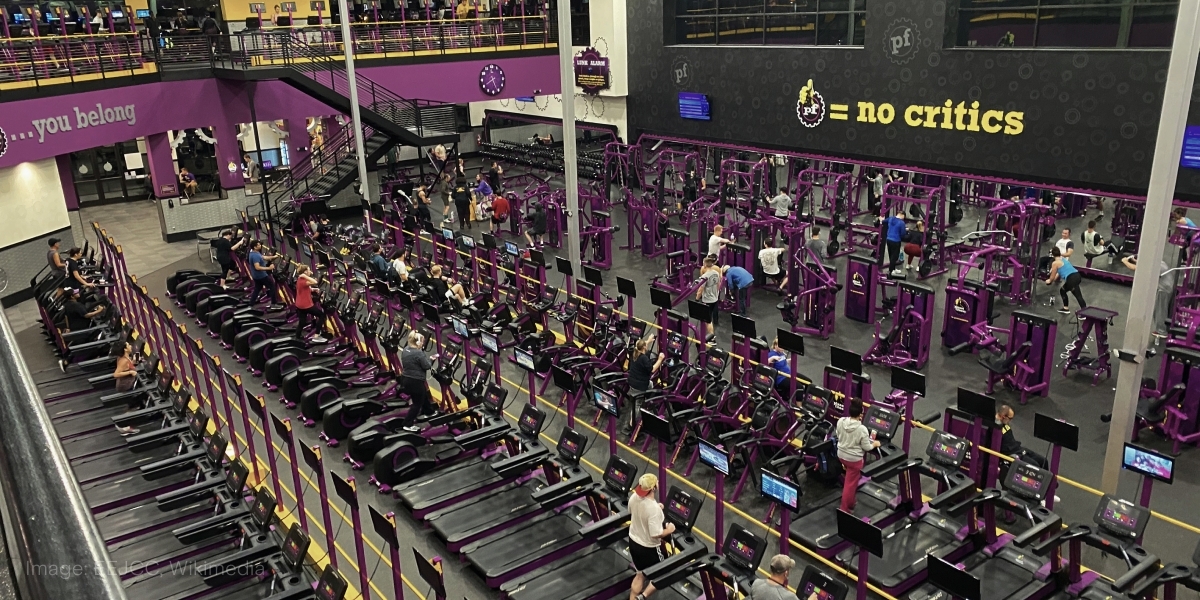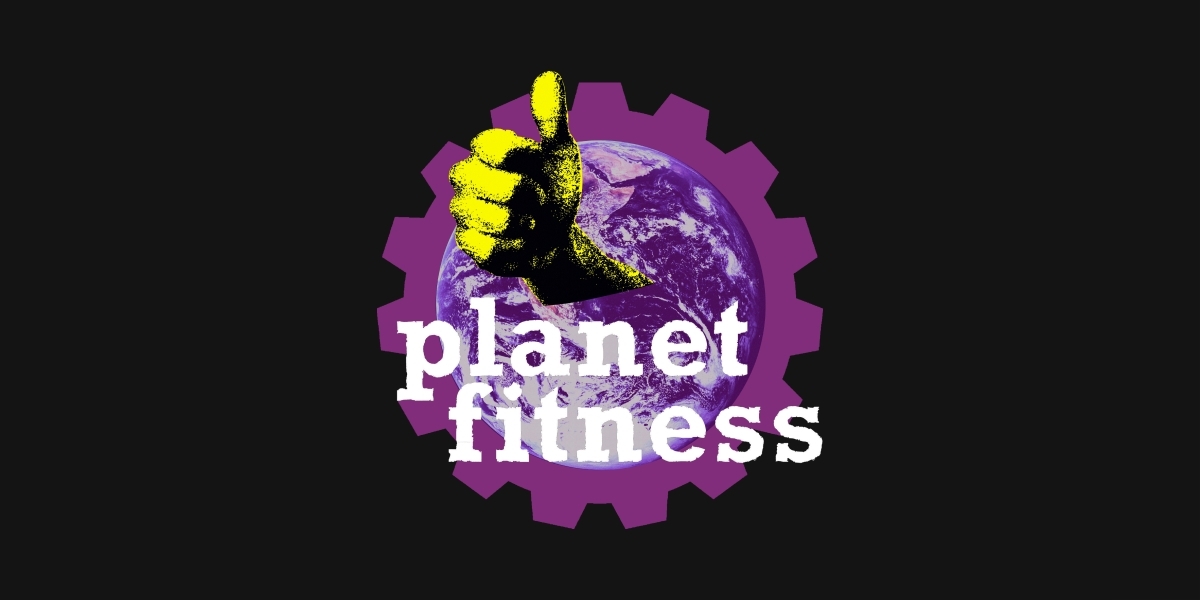
Under the Spotlight Wall St: Planet Fitness, Inc. (PLNT)
Building a family-friendly brand, Planet Fitness managed to become the biggest gym chain in the world. But is its stock fit for the current market environment? Let’s put it Under the Spotlight.

In the age of social media, it’s hard to escape the pressure to lose some weight, become more flexible, get stronger or gain some lean body mass. Whether you’re worried about your general health and fitness or just trying to look better at the beach, the nagging feeling of needing to do more also flows over into your mental health. Yet our reality is characterised by longer working hours, increasing costs of living and convenient food deliveries; which all can lead to worse health outcomes.
The benefits of exercise are well known, but starting new activities and establishing habits is hard. According to British non-profit organisation, Nuffield Health, at least a third of people are too self-conscious to join a gym. Bodybuilders and powerlifters can be an intimidating crowd, and plenty of traditional gyms cater to them. Aiming to broaden the gym-going public, Michael Grondahl and his father, Marc Grondahl, created Planet Fitness ($PLNT), a place where individuals of all fitness levels could feel comfortable and accepted, regardless of their experience or physical shape.
The gym’s “Judgement Free Zone” philosophy is not just talk, as every unit is equipped with a “lunk alarm”. This is a bell that rings whenever someone is behaving like a “lunk”, which means grunting too loud, dropping weights, monopolising equipment, wearing inappropriate clothing (such as bodybuilding strings), performing forbidden lifts (such as deadlifts) or having an intimidating posture. Misbehaving members are then verbally reminded of the gym’s guidelines, and repeat offenders might be asked to leave permanently.

Breaking a sweat
Lunks aren’t the only obstacle to working out that Planet Fitness knocks out, their low costs reduce the likelihood of money being a major barrier to exercising. Membership plans start at A$5 a week in Australian gyms, and in the U.S. they go for as little as US$10 a month. This factor can act like a double-edged sword and many don’t worry about wasting relatively small amounts compared to more expensive, specialised classes. It is estimated that half of their 18 million members never set foot in the gym.
These absentee members give Planet Fitness a large advantage compared to its competitors. For instance, with more than 2,400 locations across the globe, each averages over 7,000 members. This figure is 10x bigger than the world’s second-largest gym chain, Anytime Fitness. Planet Fitness sites are usually five times bigger than Anytime’s to accommodate these potential clients, but it’s still far ahead of its competitors.
In addition to affordable pricing, Planet Fitness has also differentiated itself through its unique amenities and services. Beyond the workout equipment, many Planet Fitness gyms offer perks such as massage chairs and tanning beds, available for those that have a black membership. This option is pricier than a regular one, but it allows you to work out from any of their facilities and bring a guest whenever you wish.

Pandemic boom
The COVID-19 pandemic caused serious injuries to the fitness industry. Over 25% of U.S. gyms closed permanently, leaving customers with access to approximately 10,000 fewer facilities across the country. However, Planet Fitness emerged relatively unscathed from the period. They managed not only to avoid shutting down a single location during 2020 and 2021, but they even opened 260 new gyms during the time. Their secret? Technology.
The team quickly recognised the shift in consumer behaviour and the need for at-home workout options. Planet Fitness introduced digital offerings like the "United We Move" campaign. This provided free daily workouts via Facebook Live, YouTube, and the Planet Fitness app. The move allowed members and non-members alike to access fitness content from the comfort of their homes, strengthening engagement and maintaining a connection with the brand.

Group activities
Planet Fitness organises monthly gatherings for its members in the U.S., offering free pizza to lure customers in and turn regulars into gym buddies. This approach might seem unconventional both from a business and fitness perspective, but people who work out together are more likely to return. Simultaneously reducing customer churn and giving clients motivation to make another trip to the gym is a welcome addition to Planet Fitness’ plate.
While pizza gatherings are a success in the U.S., the company still needs to find a way to translate this practice overseas. There are concerns that the gym giant might be facing a saturated market with over 2,000 sites in the U.S. Its presence outside the nation is still small: 60 units in Canada, 17 in Australia (only in Queensland and New South Wales), 16 in Mexico and 6 units in Panama.

Heavy lifting
The fitness giant’s model includes both company-owned stores and franchisees. The latter accounts for the majority of its locations, despite being less lucrative on average. In Q1 2023, EBITDA from their nearly 2,200 franchisees totalled US$64.73m, while just 235 corporate-owned stores account for almost half that amount with US$33.53m. Another factor that could impact their future finances is how these businesses are structured. Many of their franchises have contracts containing a put option that, if exercised, may require the parent company to acquire the franchisee’s store.
Such options were exercised by a franchisee in Mexico, settling in an US$8.55m payment in December 2022. While this event didn’t result in a large financial setback, an increase in these types of situations could put Planet Fitness at risk. Especially outside the U.S., where they face a different business landscape, potentially strong competition fierce and slimmer profit margins.
The company estimates that an American franchisee can earn around 15% in net profits yearly, with an average revenue of US$1.56m. Historical data shows that sales growth is historically lower for franchisees than for corporate-owned gyms, which can make it tough to attract new people interested in the job. For FY 2023, the company expects revenue above US$1.05b, growing +13% year-on-year. Net income is forecast to grow 30% over the year, to above US$143m. However, considering these estimates were lowered in the latest earnings call, reaching these numbers might prove to be a heavy load for the team.
This does not constitute financial advice nor a recommendation to invest in the securities listed. The information presented is intended to be of a factual nature only. Past performance is not a reliable indicator of future performance. As always, do your own research and consider seeking financial, legal and taxation advice before investing.

Megan is a markets analyst at Stake, with 7 years of experience in the world of investing and a Master’s degree in Business and Economics from The University of Sydney Business School. Megan has extensive knowledge of the UK markets, working as an analyst at ARCH Emerging Markets - a UK investment advisory platform focused on private equity. Previously she also worked as an analyst at Australian robo advisor Stockspot, where she researched ASX listed equities and helped construct the company's portfolios.
.jpg&w=3840&q=100)
